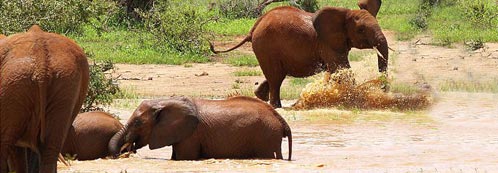Field Notes
January - April 2018
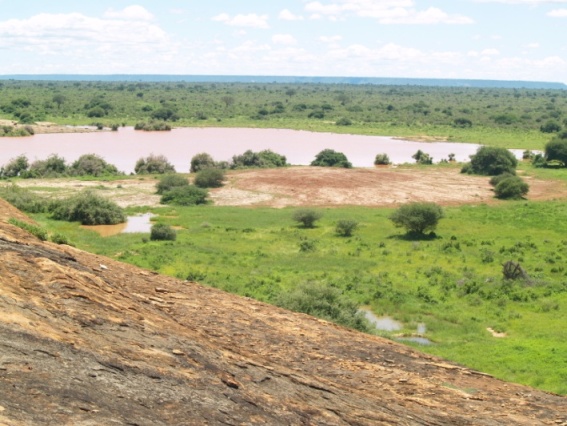
There were several storms in January and some waterholes were full. February was dry but many areas had patches of green vegetation. The rains started early, on the 1st of March. Throughout March, with the exception of a few days, it rained almost every day. Most of the waterholes were overflowing creating small lakes, like Mudonda Rock waterhole, photo right. Voi River, which typically flows for only a couple of days, bursts the banks creating many swampy areas. The volume of water was so great there were waves in the rushing river. In April, it continued to rain but not as heavy as during March. Many of the migratory birds that arrived in November stayed throughout the rains and left in late April: pairs of Steppe Eagles, flocks of Madagascar Bee-eaters, Barn Swallows and Eurasian Rollers. With the rains and abundant resources elephants dispersed throughout the park.
Bulls
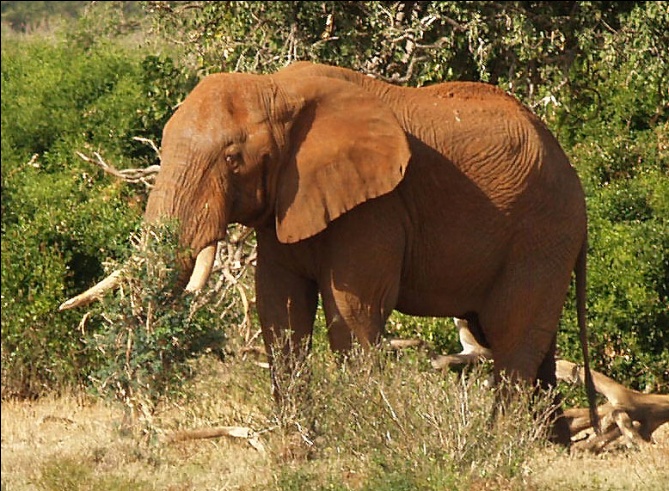
In January and February, bull groups were small, 2-3 bulls, and comprised of young males, 15-20 years old. With the rains in March and April, many known bulls were with families: Third, Hocki, Swift and Oort, Some groups were small, five individuals, while other groups were large, 40 or more elephants. On several occasions, I saw bulls in musth and elephants mating. The loud rumbles called my attention to the groups. However, distance and the tall and thick bush prevented positive identification. Draco (id-2010), photo left, is typically alone or with a family. In mid-April, he was in musth with Savanna, Summer and an unknown female with a floppy left ear. Draco was not guarding a female but following the family heading west. In early April, Pemba was alone; alert, standing tall and waving his ears alternately-signs of musth. When I saw him 13-days later he was in “full” musth: inside hind legs were wet, temporal glands swollen and fluid to his jaw. He was guarding an unknown female in a group of 52 individuals including Wishbone, four young bulls (15-20 years old) and two 30-year old bulls. Many unknown large bulls, 35+ years old, were in an aggregation of 300 elephants in early April in an open grassland area.
Families
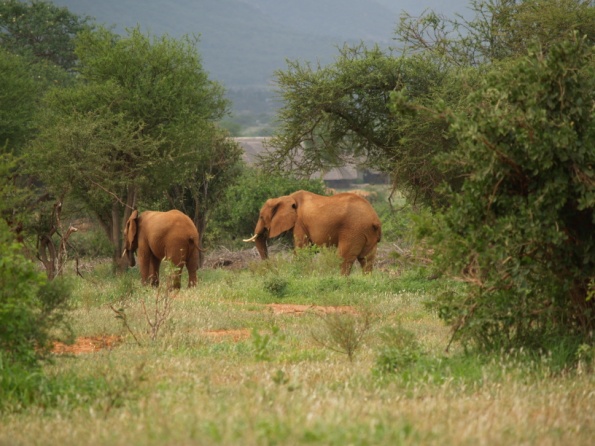
Most of the families sighted between January and April were from the Hill Clan. Last year In June, B2 (id-2003) was accompanied by her 6 year old female calf and a 14 year old male, when I found her in April this year she was with her female offspring and a new 7-8 month old calf, but the young male was not with them. The grass was too tall to see the new calf clearly to determine the sex. Chrystal, Olive, Peridot and their offspring were part of an aggregation of 300 elephants with numerous large bulls in an open grassland area. Heloise (id-2005), photo right, was with a large unknown female headed toward Voi River. Savanna and Summer’s families were together on several occasion during April, and on one occasion Oort, a 22 year-old male was following them. C.T.’s family of five was at the base of a hill where the grass was covered with vines with purple and white flowers. One young male of 8-years was using the vines he wrapped around his trunk as a fly swatter. On several occasions, he tossed the vine over his head and then left it there tucked behind his ear. When the family moved away, he followed with the vine and purple flowers draped over his head.
May - August 2018
During May and June it rained several times keeping waterholes full and the vegetation green. In May, I found a herd of Fringe-eared Oryx resting in the sun. July was cool and dry but many waterholes remained full attracting large groups of elephants, giraffe, zebra and Hartebeest. In August, the temperature dropped further and there were several storms all month. In most areas, the grass was dry, but the Acacias were green.
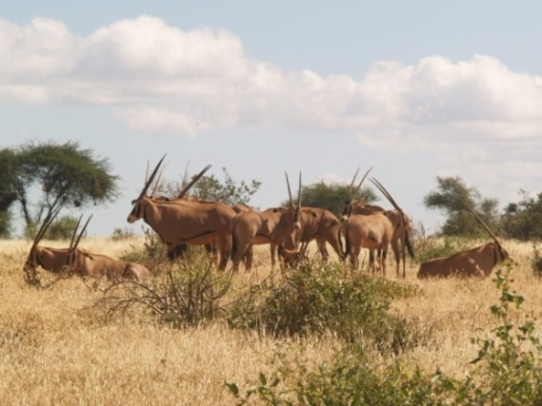
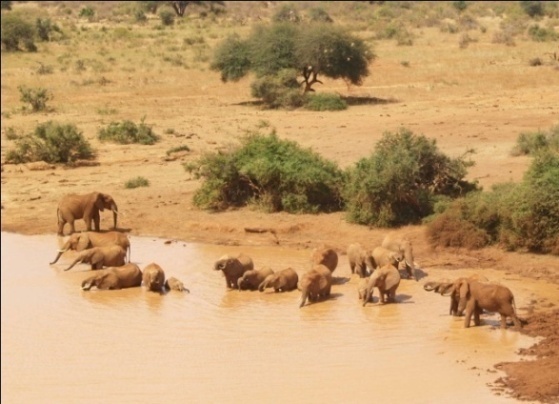
Bulls
Between May and August, most bulls were alone or with families. In May and June Red, Quark, Slip and Wind were alone and Breeze, Pepper and Rock were with families. On several occasion in June Pepper a 26-30 year old bull (id-2012) was with Savanna and Summer. Also in June, Riley a 21-25 year old bull (id-2012) was in musth with a family feeding in a bush-grass area. Riley was following an estrus female. As the family moved through the bush, Riley stopped and rubbed his temporal glands on the trunk of a tree. In July and August Java, Kilo, Wind, Tan, Arrow and Pulsar were alone and Asgar, Third and Riley were with a family. While Crux and Gold were with two young unknown bulls and Hogan was with four bulls.
Hogan is a bull I have known a long time. Long-term records show he is most often with other bulls. He often associates with bulls in aggregations of 20 and 30 bulls and on one occasion, he was within an aggregation of 52 bulls, an impressive sight. In July this year, he was with four other bulls, three 20-30 years old and a young male 12-14 years old in an open grassland area feeding.
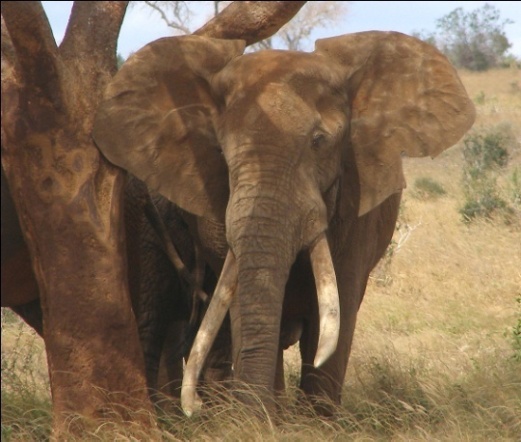
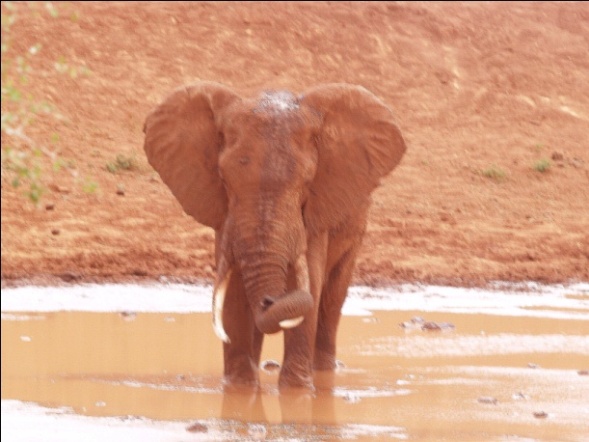
Pulsar is a difficult bull to identify unless he is relatively close. He is most often spatially alone. In July he was alone resting with his trunk curled on top of his tusk, in the middle of a waterhole; a common bull behavior. Arrow was also alone, 500 meters to the north of Pulsar and a group of young males including Crux and Gold were two kilometers to the south.
Families
During May and June, many families aggregated at the base of the hills and some were with bulls. Tamika, CT, B2, Savanna and Summer, Hazel and Allie, Cypris and Ebony were in family units. B2 was with her two female offspring and Breeze (her son) a young male with splayed tusks. Spring was with an unknown bull, 35 years old, Maple and Parsley were with Rock and Savanna and Summer were with Pepper. In July and August with the exception of Cypris who was with a 20-year-old unknown bull, most families were in family units including B2, Chestnut, Savanna and Summer. In July two females had new offspring since the last sighting: Skye had a 7-month-old female and Crescent had a one-year-old female calf.
Evergreen is one of the original females I identified. In 1997, she had a female calf with just a stub of a trunk but in 1999, the calf was not with her. Since 2003, Evergreen has had three calves, two-females and one-male, all with a normal trunk. On several occasions, Evergreen and her family leave the park and move to private land and then return to the park.
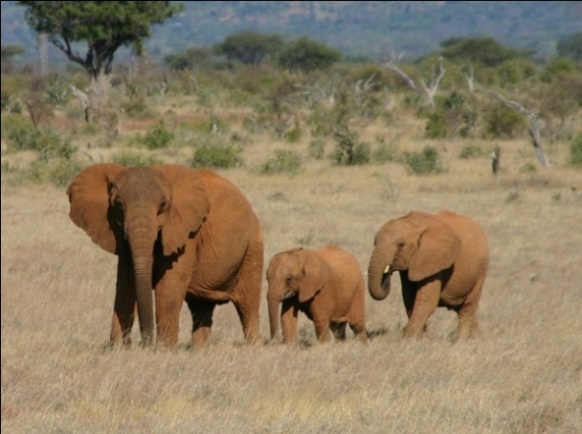
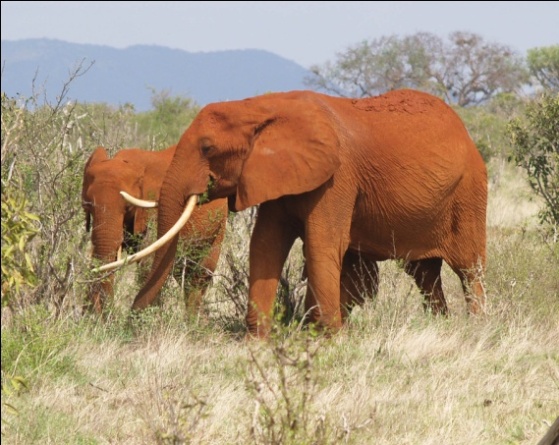
Boscia is a new identified female. With her distinctive tusks, she is easy to identify from great distances. However, she is a female I record several times in a month and not see again for a year. When she was first photographed and named, she was accompanied by two female offspring. In June this year, both calves appeared healthy.
September - December 2018
It rained for several days in September and in October with large localized green vegetation patches. The rains started in mid-November often with strong winds, creating an illusion that it was raining side-ways. It rained three to five days straight several times in December. Migratory birds returned to Tsavo in mid-November, Eurasian Rollers, Pallid and Montagu’s Harriers, Steppe Eagles and large flocks of Barn Swallows. In November, I found a group of 16 lions; the largest group I have seen in Tsavo. Klipspringers (photo right) typically rest on the rocks of a hill. Their tawny color coat blends into the color of the rocks and are often difficult to spot.
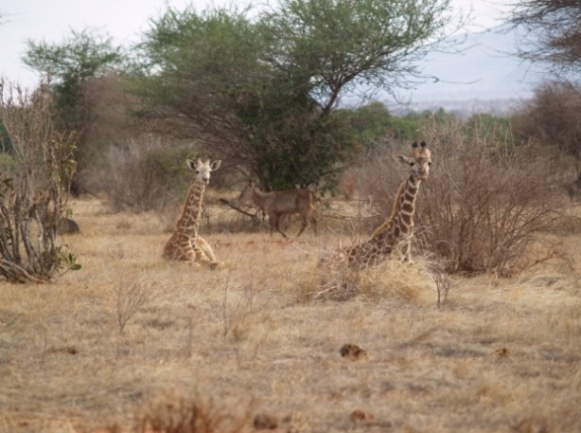
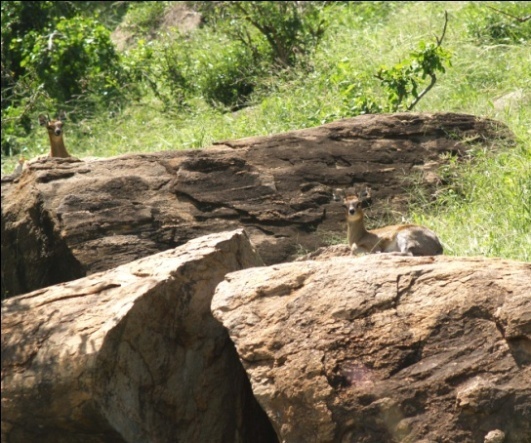
Bulls
Between September and December most known bulls were in small bull groups of two-three bulls or with families between nine and 22 individuals. In mid-September, Skylight was with three bulls drinking and splashing from a natural waterhole. The next day he was with a family of 12 first drinking from a pipeline leak then resting together under an Acacia. He towered over the adult females in the group. He first moved into the bull area nine years ago. He broke-off the tip of his left tusk in 2013 and broke-off ¾ of his right tusk in 2015. He is often with other bulls of the same age. I first photographed Pepper six years ago. He is easy to identify with a distinct notch in the top of his left ear. He broke-off part of his left tusk in 2014. He tends to spend most of his time with family groups.
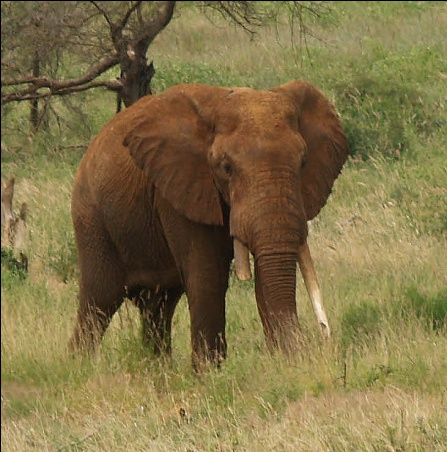
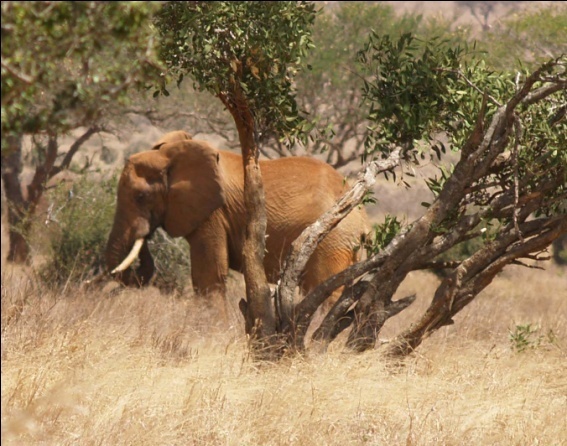
By the end of 2018, 345 independent bulls have been identified, photographed, named and entered in the Tsavo East National Park Elephant Database. Thirteen of these known bulls move between Tsavo East and private land and one moves between Tsavo East and Tsavo West. 279 bulls have been monitored for more than a decade.
Families
Between September and December most known families were with other families in groups of three (mother with her two offspring) up to several families (25 individuals). In September Skye with her two offspring (9-month old female and 6-year old female) were drinking from a pipeline leak pool with Mango’s family. As Skye walked away from the pool she pick-up a small stick, turned it several times with the “fingers” of her trunk then once it was in the correct position scratched her chin. I photographed Livingstone and Abydos use a branch or stick to scratch but this is the first record of female tool use. Gemstone was first photographed and named thirteen years ago. She has had one male and three female calves. With a distinct large notch in the top of her right ear, she can be identified from large distances. In 2009, she broke-off ½ of her right tusk. She spends time with Chrystal, Lannea and Batik. Bauhinia was identified last year. Both of her ears are weak, but the right ear folds forward. She has three offspring, two females and one male. She is often with Hazel, Savanna and Summer. Bauhinia is one of 21 known adult females with a broken ear, some fold forward and some fold back.
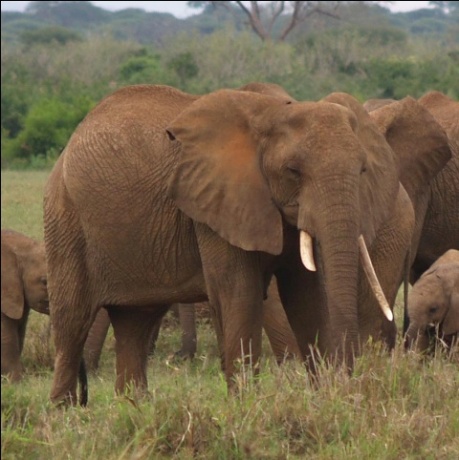
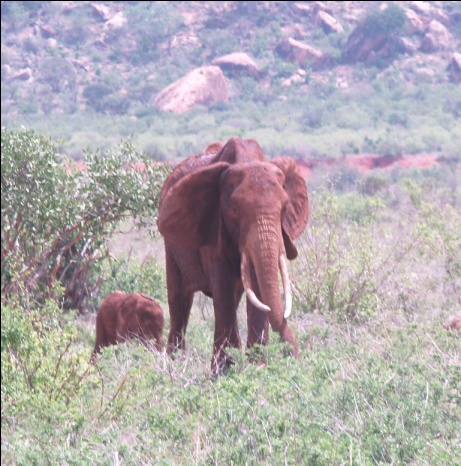
By the end of 2018, 286 adult females have been identified, photographed, named and entered in the Tsavo East National Park Elephant Database. Five of these females and their offspring move between Tsavo East and private land. 241 of these known females have been monitored for more than a decade.
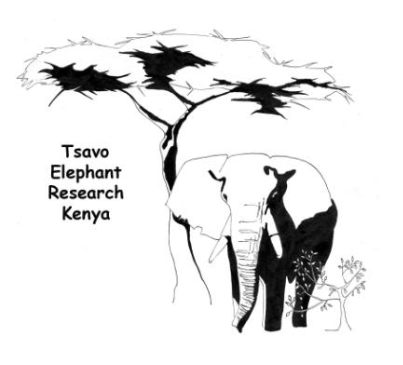
Tsavo Elephant Research Needs Your Help.
Donations are needed to continue this 30+ year field study
and support a Kenyan research field team.
We monitor the behaviors of Tsavo known bulls and families:
group dynamics, offspring & survival, musth cycles and habitat use.
Please click here or on the donate button
to send your donation.
Thank you!
Barbara
